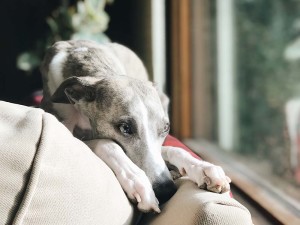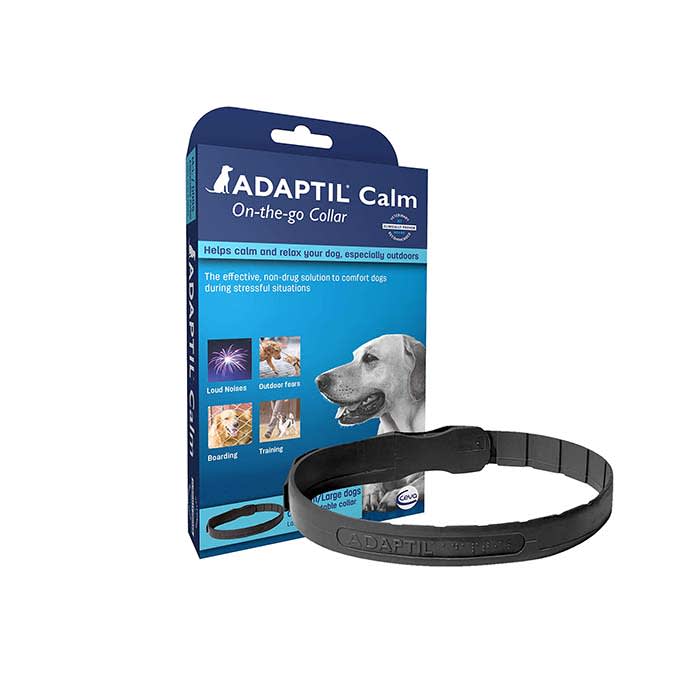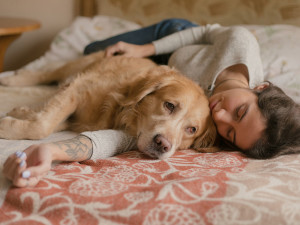How Dog-Appeasing Pheromones Can Help Dogs Relax
Hey, man. It’s all about those chemical messengers. See how Adaptil can help your pup.

share article
If you’re the kind of person who gets visibly annoyed when someone tells you to “calm down” (as if you haven’t tried that!), you’ll understand that there isn’t exactly a cure-all to stress. After you unclench your fists from the memory of someone trying to force you to deep-breathe your way out of a panic attack, read on about some very real science that can help your dog chill when they are feeling amped or anxious.
OK, ready? Great.
Your dog may spend most of their time snoozing away on the couch or gleefully getting out zoomiesopens in a new tab, but there will likely be times when they feel anxious or afraid. Some dogs may experience chronic anxiety or severe bouts of stress when they’re left aloneopens in a new tab or during a summer stormopens in a new tab. Dog Appeasing Pheromones, or “DAP,” can help.
What are Dog-Appeasing Pheromones?
According to Dr. Valli Parthasarathy, DAP replicates the pheromone — or chemical messenger — that a mother dog secretes from her sebaceous glands when she is nursing, which has a relaxing and comforting effect on her puppies. Products that use DAP replicate this calming effect, and multiple studies have shown its impact, including this oneopens in a new tab that showed the use of DAP may improve the recovery of shelter dogs who undergo spay or neuter surgeryopens in a new tab.
What Conditions Can DAP Help With?
Adaptil is the most common product on the market. It comes in a variety of forms including collars, plug-in diffusers, and sprays. In Dr. Parthasarathy’s experience, dogs who are experiencing anxiety seem to benefit most from DAP, versus those struggling with things like basic obedience skills. Dogs with separation anxietyopens in a new tab, noise phobias like thunderstorms, and puppies or dogs adjusting to a new homeopens in a new tab are the most common patients to benefit from DAP.
Do DAP Really Work?
At Dr. Parthasarathy’s private practice in Oregon, about 50 percent of anxious dogs see an improvement after using DAP products. Pheromone treatment is very unlikely to cause any harm, so it’s easily paired with a more robust behavior modification plan. In some cases, owners report an almost immediate improvement. Others notice an increase in their dog’s anxiety only when a plug-in diffuser or collar expires, highlighting that DAP may provide subtle, but important, improvements. One blind dog who was experiencing aggression-related anxiety and had undergone some behavioral modification saw a marked improvement when wearing her DAP collar.
As with any behavioral challenge, Dr. Parthasarathy sees treatment as a puzzle, and her job is to find the pieces that need to come together to support the dog. She also recommends that owners begin with a visit to their regular veterinarian to rule out any potential medical reasons for the behavior.
The Best DAP Products

Lindsay Hamrick, CPDT-KA
Lindsay Hamrick lives in New Hampshire with her three dogs, chickens, and an assortment of rotating foster animals. She forces her elderly chihuahua, Grandma Baguette, on overnight backpacking trips, can diaper a lamb with one hand, and while she’s a long-time Certified Professional Dog Trainer, 66.7% of her dogs still won’t lay down when asked.



